| Heredity: | Open Pollinated |
| Skin Color: | Orange Gold |
| Flesh Color: | Gold |
| Fruit Shape: | Round |
| Fruit Size: | Medium |
| Fruit Weight: | 7 oz. |
| Leaf Type: | Regular-Leaf |
| Tomato Plant Height: | 6 feet |
| Best Uses: | Slicing |
| Growth Mode: | Indeterminate |
| Earliness: | Mid-season |
| Days to Maturity: | 75 |
| Disease Resistance: | Fusarium Wilt 1 Fusarium Wilt 2 Verticillium Wilt |
| History: | Bred by Dr. W. S. Porte at the Beltsville, Maryland Station and released in 1950. |
| Country: | USA |
| Plant Habit: | Vine |
| Life cycle: | Perennial |
| Sun Requirements: | Full Sun |
| Water Preferences: | Mesic |
| Minimum cold hardiness: | Zone 11 +4.4 °C (40 °F) to +7.2 °C (50 °F) |
| Plant Height: | Varies greatly by species and cultivated variety. |
| Plant Spread: | Varies greatly by species and cultivated variety. |
| Leaves: | Other: Varies greatly by species and cultivated variety. |
| Fruit: | Showy Edible to birds |
| Fruiting Time: | Other: Varies greatly by species and cultivated variety. |
| Flower Color: | Yellow |
| Bloom Size: | Under 1" |
| Flower Time: | Other: Varies greatly by species and cultivated variety. |
| Uses: | Vegetable Suitable as Annual |
| Edible Parts: | Fruit |
| Eating Methods: | Raw Cooked |
| Resistances: | Rabbit Resistant |
| Toxicity: | Leaves are poisonous Roots are poisonous |
| Propagation: Seeds: | Self fertile Other info: Direct sowing into the garden not recommended. Sow seeds into sterile seed starting mix, 1/8"-1/4" deep, indoors, 6-8 weeks prior to last expected frost date. Optimal germination occurs in 7-14 days with constant moisture and soil temperatures of 75-90F. |
| Propagation: Other methods: | Cuttings: Stem |
| Pollinators: | Self Various insects |
| Containers: | Preferred depth: Some tomato varieties, primarily dwarf and determinate varieties, are suitable for container gardening. Large, vining, indeterminate types can be grown in 5 gallon or larger containers but may require extra attention. |
| Parentage: | Pan American x Jubilee |

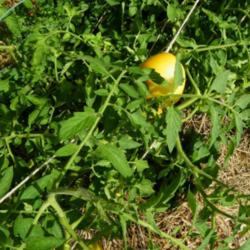
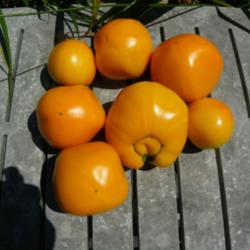

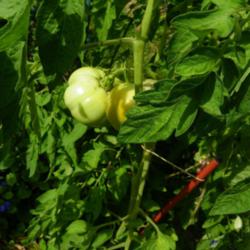
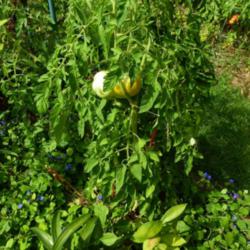
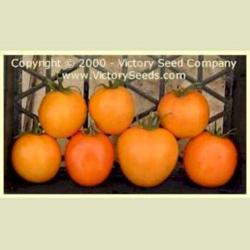
« Add a new plant to the database
» Search the Tomatoes Database: by characteristics or by cultivar name
« See the general plant entry for Tomatoes (Solanum lycopersicum)